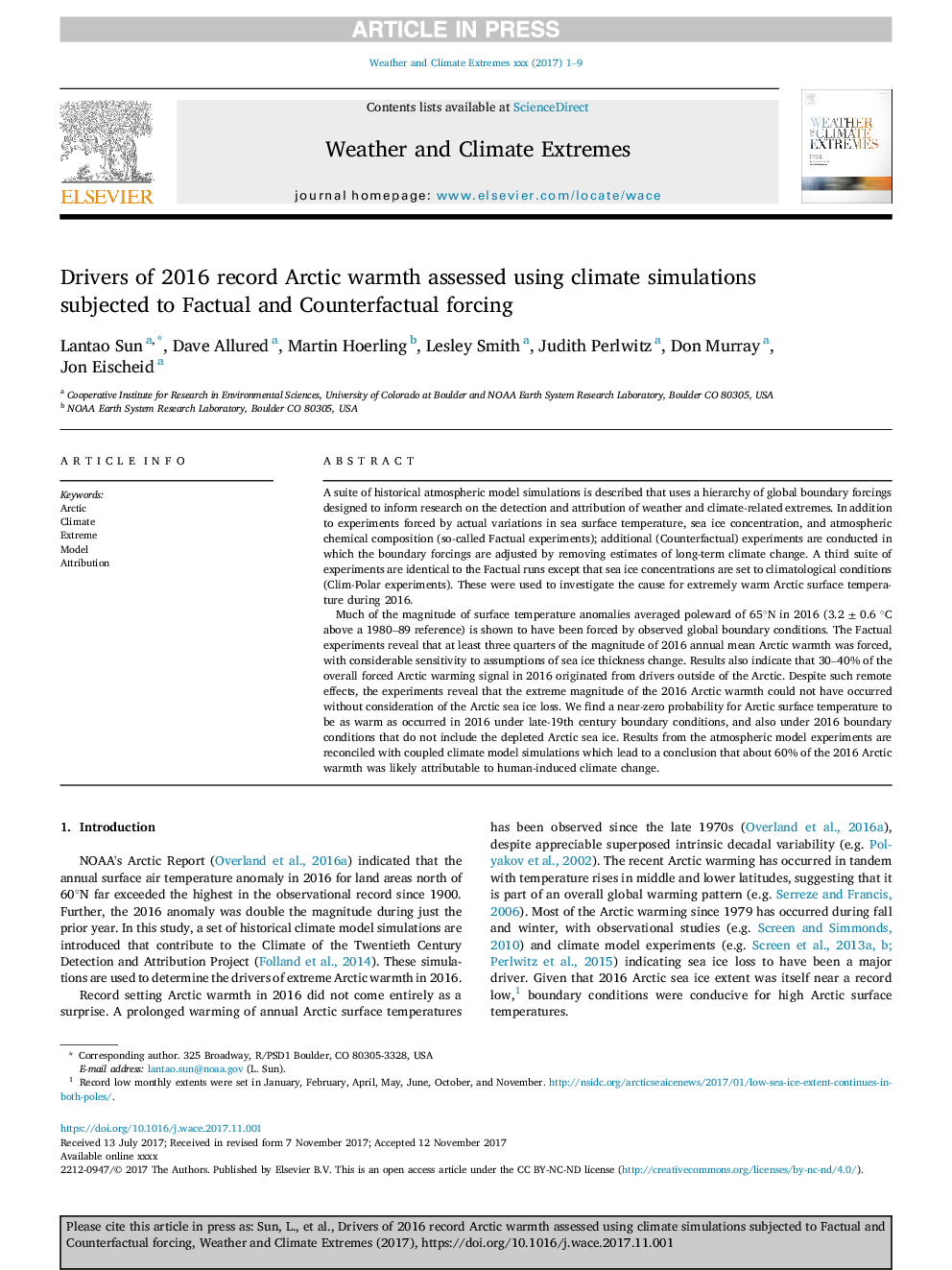| Article ID | Journal | Published Year | Pages | File Type |
|---|---|---|---|---|
| 7501224 | Weather and Climate Extremes | 2018 | 9 Pages |
Abstract
Much of the magnitude of surface temperature anomalies averaged poleward of 65°N in 2016 (3.2 ± 0.6 °C above a 1980-89 reference) is shown to have been forced by observed global boundary conditions. The Factual experiments reveal that at least three quarters of the magnitude of 2016 annual mean Arctic warmth was forced, with considerable sensitivity to assumptions of sea ice thickness change. Results also indicate that 30-40% of the overall forced Arctic warming signal in 2016 originated from drivers outside of the Arctic. Despite such remote effects, the experiments reveal that the extreme magnitude of the 2016 Arctic warmth could not have occurred without consideration of the Arctic sea ice loss. We find a near-zero probability for Arctic surface temperature to be as warm as occurred in 2016 under late-19th century boundary conditions, and also under 2016 boundary conditions that do not include the depleted Arctic sea ice. Results from the atmospheric model experiments are reconciled with coupled climate model simulations which lead to a conclusion that about 60% of the 2016 Arctic warmth was likely attributable to human-induced climate change.
Keywords
Related Topics
Physical Sciences and Engineering
Earth and Planetary Sciences
Atmospheric Science
Authors
Lantao Sun, Dave Allured, Martin Hoerling, Lesley Smith, Judith Perlwitz, Don Murray, Jon Eischeid,
